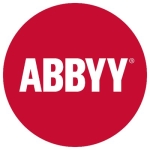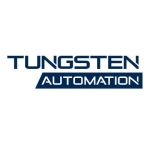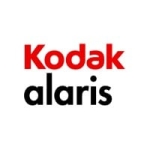What is our primary use case?
Our use case was related to processing documents that were coming in for the purpose of trade finance. We would scan in the documentation that came from our customers, and we would train the Datacap system to basically recognize certain keywords, pull out the information from the document, and forward this important data to another system.
I'm no longer working directly with that customer. My relationship at that point was that we were specialized consultants in the ECM field, and that particular company was our customer. So, we had a vendor-customer relationship with them.
How has it helped my organization?
We used its advanced optical character recognition (OCR) capabilities to extract information from the documents to save the time of our knowledge workers. They didn't have to do the tasks manually.
What is most valuable?
It is highly extensible, which we found to be most valuable. It is a very extensible solution because it is based on configurable rule sets. We were able to amend and adjust the solution and very easily add custom code and custom components. It does require some programming experience, but we found that not to be an issue. We liked its extensibility.
We also liked the fact that the solution was quite scalable. We could just add more service to our solution if we needed more processing power.
We also found it to be quite a reliable solution. We didn't have any serious errors, crashes, or unnecessary downtime. We found it to be a relatively stable product with a lot of history and a lot of support from IBM.
What needs improvement?
One of the things that we wished for was to have an easier way to carry out the customizations. Currently, if you want to customize data, you need to have a developer with C# knowledge. If IBM could implement a no-code or low-code platform for Datacap, it would be easier to adjust it without needing a developer, which was always the most difficult part.
The first line of support from IBM can also be improved. When we reached out to IBM to explain the problem that we had, we always had to go through a lot of hurdles. It was really not easy to get to the specialists that we needed. Dealing with the first-line support from IBM was always a very difficult thing. We had more experience, and we knew a lot more about the product than their first-line support did, and that's a really bad sign.
So, the support and being able to extend it only by code are the main areas of improvement.
Buyer's Guide
IBM Datacap
September 2025
Learn what your peers think about IBM Datacap. Get advice and tips from experienced pros sharing their opinions. Updated: September 2025.
868,759 professionals have used our research since 2012.
For how long have I used the solution?
I started working with Datacap in 2019, and I've worked with it all the way until the end of last year. So, it has been two to three years.
What do I think about the stability of the solution?
It is reliable, and its performance is also really good. Its reliability was good, and we didn't encounter many software bugs. We did encounter a few, and we reported them to IBM. They then made the resolution a part of their next fixes, which is just life in the software industry, but overall, we had a very positive experience with performance and reliability.
What do I think about the scalability of the solution?
Its scalability was good. In terms of scalability, if you want to make your solution even faster, it is quite easy to just add a new rule runner server, which basically is the server that does the hard processing. So, if you ever notice that you have a large amount of documents and your processing time is increasing, you can always just set up and deploy an additional server.
In terms of its users, at the customer side, we had approximately 15 to 20 users in total, and their roles were compliance officers. Most of them were working in compliance, and they were working on sanctions checking. The idea was if we found anything suspicious on the document, such as goods coming or going to Russia in this current period, we should be able to flag that out. It was more of compliance activity. It was initially targeted for about 5 to 10 users, and then some other business units inside the organization also wanted to do the same thing and use it. So, its growth inside the organization was twice more than what we expected, but we also catered for that in the infrastructure. After that, they didn't add more users.
How are customer service and support?
Their documentation is relatively extensive. If you're deploying the solution, you find pretty much everything you need.
The only hiccup was really with the first-line support. Every time you contact IBM support, you have to go through the first-line support. You can't just jump forward and go to the higher-level support. Their first-level support was a very big area of improvement. Their support is based in India, and we were working in a different time zone. We were also working in a different language. We were working in the German language and the Dutch language, and we needed support in those languages, but we were unable to get support in those languages. Their support is only in English, which is not ideal from a customer perspective. It seems that IBM was struggling a lot to find capable support engineers in the Europe region, and they basically outsourced the entire first-line support to India. Everybody in the world has to contact India, which is a problem, and we, as a customer, did not like that at all. We had bad experiences with that.
Which solution did I use previously and why did I switch?
We were using a competitor product called Kofax. We tried out Datacap because IBM came to us with the promise that they've got the Trade Finance Accelerator plugin. This plugin was specifically for our use case because we needed to do compliance checks and sanctions checks. That was something that Kofax did not have. So, we basically gave it a try. We wanted to see if we can revolve our business process around Datacap instead of Kofax. This plugin was very attractive for our management, and that's how they got in.
How was the initial setup?
When it came to deploying the actual Datacap solution itself, we carried out an on-premises deployment. I was responsible for the technical deployment. We deployed it on our own virtual servers on our own virtualized infrastructure. We deployed several servers and set up a clustered configuration for the data. We also set up a clustered configuration for the front end for data, which is a product called IBM Content Navigator. So, we had a cluster setup for the front and the back end. Rolling it out from the start to the finish took us about a month.
After that was completed, we reached out to IBM to give us a sample application for trade finance, and this is where they gave us a special plugin module called the Trade Finance Accelerator for IBM Datacap. That's where we spent most of our time. We were just deploying changes to the Trade Finance Accelerator module. So, that's where we spent the bulk of our time after the infrastructure and the core software were built.
What about the implementation team?
I was responsible for the technical deployment. For the initial deployment without the coding part, we needed about three people in total. We had a lead technical consultant, which was me, and then we had two additional people to pick up other small activities, deployment run books, etc. It took a month in total to deploy it from zero.
What was our ROI?
It was actually a lot more expensive than our previous solution Kofax, but at the same time, because we saved so much development effort with the Trade Finance Accelerator plugin, we thought that we could offset those development costs with the additional licensing costs. That was the idea, and a second step from there was to say that we're going to do the cloud migration sometime soon. So, this user value unit and processor value unit licensing will fall away, and it will become a lot cheaper. That was the idea. So, we saved a bit of money with the development costs. We were going to go to the cloud anyway. Therefore, we didn't really mind the extra costs in the interim.
What's my experience with pricing, setup cost, and licensing?
We were using the User Value Unit licensing, which means we get charged per active user of the system, and if I'm not mistaken, we also had it for the rule runner service. They had a PVU license model, which is a processor value unit. For each process that we have in our system, we pay a certain amount of money. We found the pricing to be quite steep. It was really an expensive solution in comparison to Kofax, which had a different licensing model and was actually cheaper overall because they charge per page and not per user and per process.
What other advice do I have?
I've got a few ideas there. When running such a project, a key success factor is to get the IBM consulting division in on your project. They call them global consulting services, and they need to be there from the beginning because when they are on the project, they will always help within IBM to assist with any question. So, as long as you have IBM consulting on board in the initial phases of your project, you'll have a very successful rollout and implementation. There are obviously consulting costs, but you must have them on board to be successful.
It is also very important to maintain this contact. There is another department of IBM called the IBM Lab Services. You should keep in touch with them as well because they're the ones who are more interested in the long-term usage of the product in terms of how the customers use it and how they can improve. If one keeps contact with them, which I did in my role, I was able to always have direct access to specialists and key decision-makers, who are actually changing the product and updating the product landscape.
So, I would advise other customers to have a very close working relationship with IBM when implementing the product. Don't be a lone wolf, and don't try and implement it on your own without the necessary support from IBM because then the project will fail. That's just the reality of the situation. You need a bit of guidance, and you need IBM to hold your hands during the first part of the project. As long as you keep that in mind, it can be a very successful project.
I would rate it a seven out of 10. I wouldn't go all the way up to eight or nine because the long-term support was one of the worst things that we had to deal with.
Which deployment model are you using for this solution?
On-premises
Disclosure: My company has a business relationship with this vendor other than being a customer. partner













